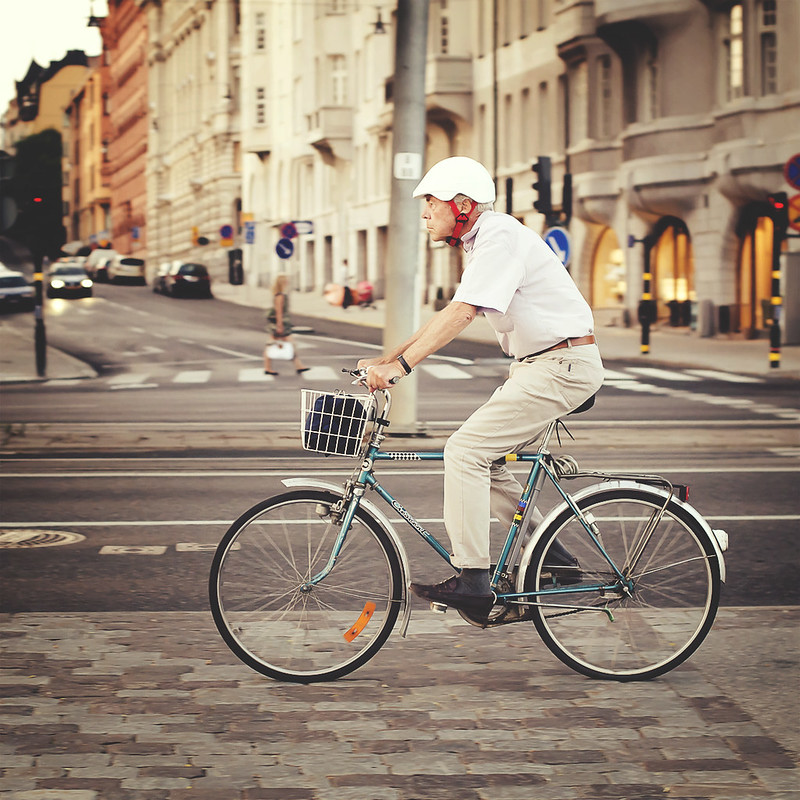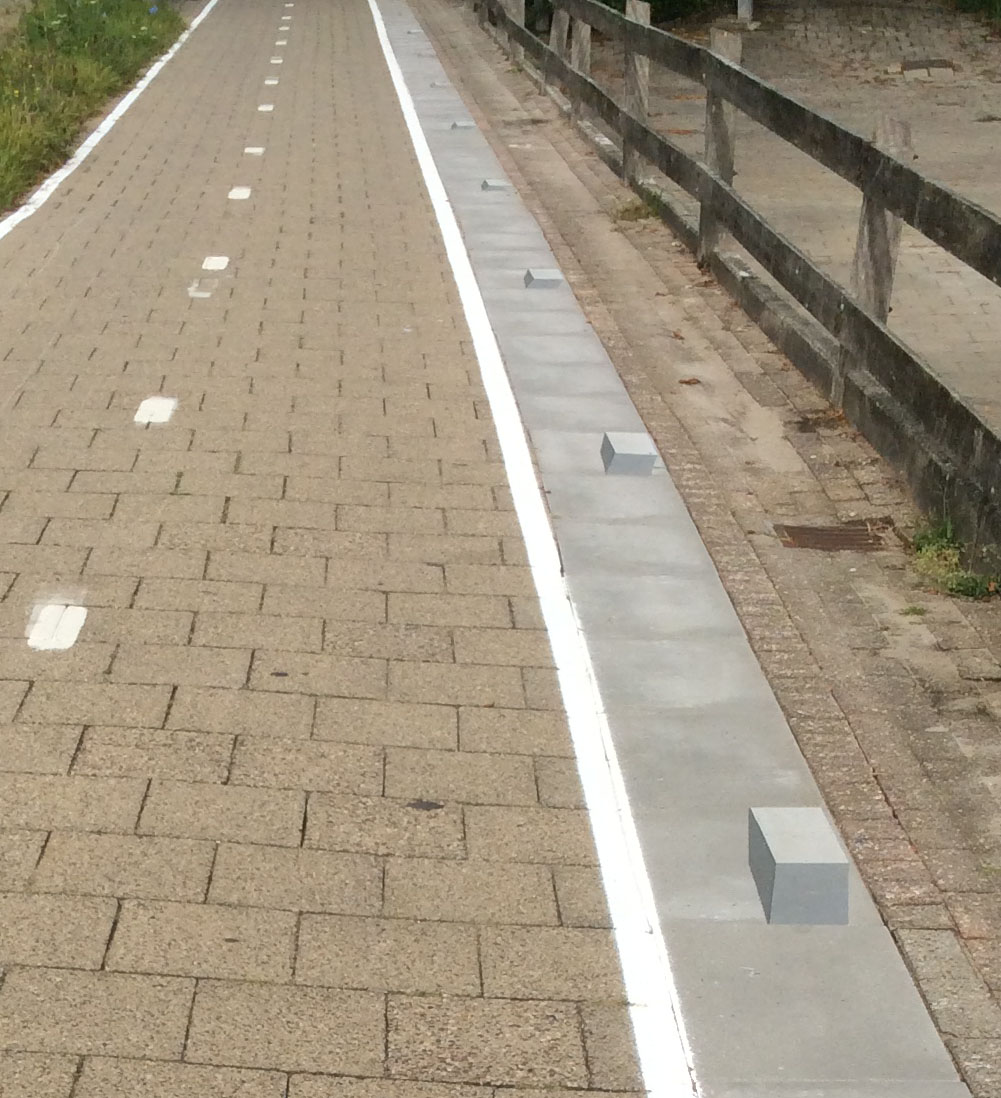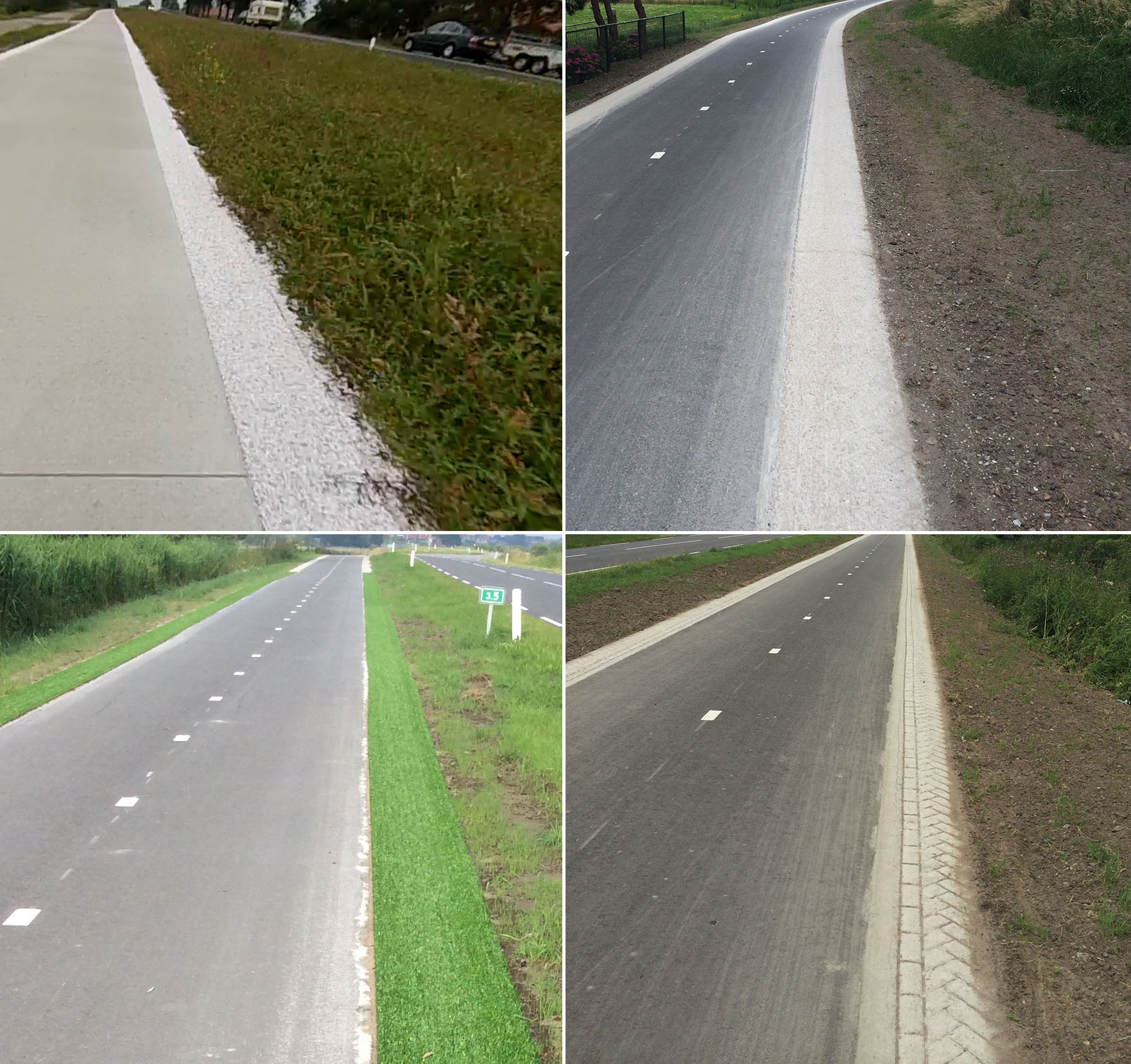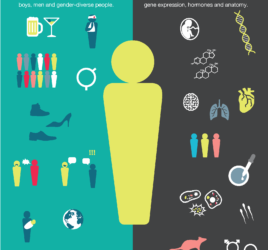
A forgiving cycle path: preventing bicycle crashes in the elderly
Have you ever wondered why people ride a bicycle? And perhaps even more peculiar: why do more and more older people ride a bicycle nowadays? Well, for some it is just a relatively inexpensive and easy way to travel. But for many (Dutch) people, cycling is an enjoyable activity [1]. Moreover, cycling is beneficial for personal independence, physical and mental fitness, while also benefitting the environment [2].
Cycling can therefore contribute to personal mobility, health-care, and climate change, all at the same time.
Even though cycling has many advantages, it also carries some risks: in particular for older people [3]. It is therefore important that the positive effects of cycling outweigh the potential negative consequences and that everybody can cycle safely into old age. Many aspects of cycling may lead to a fall in the elderly, which includes difficulties getting on or off the bicycle, but also unintentionally riding off the road or colliding with an obstacle [4]. Such crashes do not only happen to older cyclists of course, but most younger people simply get up again and continue cycling with only a few bruises. Older people are more likely to sustain severe injuries after a bicycle crash [5], such as head injuries or fractures in an arm, leg, or hip [6].
As part of my PhD project in traffic psychology, my colleagues and I looked for solutions to prevent bicycle crashes in older people caused by unintentionally drifting off a cycle path.
While cycling, people are not only moving forward, but they are also balancing their bicycle by (slightly) moving from left to right [7]. Occasionally it happens that a cyclist makes a (larger) manoeuvre, either intentionally or unintentionally, for which there may not be enough room on a road or cycle path. After drifting off the pavement onto the grass, sand, or other type of verge, it may happen that a cyclist cannot safely return to the path and skids [4,8]. In principle, this problem could be solved with a relatively simple adjustment: widen the path’s main surface, for example. However, this is an expensive measure and not always possible on every location.
As you may have seen in real life, cyclists tend to take the path of least resistance. That is, they try to keep their distance from all kinds of inconsistencies or objects on or near the road [9]. With this in mind, we asked ourselves: what if this behaviour could be used to prevent cyclists from drifting off a cycle path?
In an experiment, we tested whether painting illusionary objects next to a cycle path could influence cyclists into keeping more distance from the edge, to prevent verge-related crashes [10,11], see picture below.

Cycle path with painted illusionary objects at the side
These objects were based on street-art: images painted on a street’s surface in such a way that, when standing on the intended location, they create the optical illusion of looking at a real, three-dimensional object. We tried to create an ‘illusionary object’ that would elicit a reaction similar as to real objects, only without the risk of actually colliding with it because they are only paint on the surface [11]. While brainstorming about these objects, the craziest ideas came up ranging from large illusionary holes or cracks to illusionary animals, or even other fictional creatures. In the end we had to keep it simple and less frightening (slightly more boring as well…) to prevent over-reactions in traffic. Therefore, a relatively simple object was eventually used: a small cube.
We also tested other solutions that were less outside-the-box. Among these were a 30 cm strip painted on the edge of a cycle path, which made the path optically narrower, and three different 50 cm strips constructed next to a cycle path, which added more surface for the cyclists to ride over [11,12], see picture below for the different solutions. These strips were made in a colour that either contrasted from a path’s main surface or not, and were also uncomfortable to ride over.
These uncomforatble strips are not, as people may think, to annoy cyclists, but to warn them that they are drifting away (for their own safety).

Different solutions that were tested for prevention of bicycle crashes
We asked two groups of older cyclists to cycle a route where these solutions, including the painted illusionary objects, were constructed in short segments. With small GPS-cameras mounted on their bicycles, we observed and measured their cycling behaviour, and after their trip we asked the cyclists several questions about their experiences along the way [10,12]. Completely against our expectations, the illusionary objects had no effect at all [10]. There was even a small trend in the opposite direction: those who actually saw these objects cycled closer to the edge of the path. It was unclear why this might have occurred. Perhaps the illusionary objects were too conservative that some cyclists had to take a good look before they knew what they were. It could also be that only these cyclists saw the objects because they were cycling closer to the edge.
Either way, the illusionary objects in their current form were not suitable to be used in traffic.
With regard to the strips painted on the cycle path’s edge, where the cycle path optically became narrower, the cyclists moved further towards the centre compared to a cycle path without these strips [12]. The opposite occurred with strips constructed next to the cycle path, where extra, but less comfortable space was created. On that path, cyclists moved on average more towards the edge, but to a lesser extent than the added width of the strips [12]. The implications for safety are the same: for both types of strips (on and next to the cycle path), the total distance the cyclists keep to the grass was increased. Furthermore, on locations where the strips were constructed next to the cycle path, the cyclists also increased their distance to oncoming road users.
Concludingly, strips on the edge or in the shoulder of a cycle path have a positive safety effect on a cyclist’s position, which could prevent bicycle crashes due to drifting off a cycle path.
In essence, keeping distance in general is a very effective measure to make cycling safer for everybody, especially on increasingly crowded cycle paths. Something we might explain today as a form of social distancing…
References
1. Harms, L., & Kansen, M. (2018). Cycling Facts. The Hague: Netherlands Institute for Transport Policy Analysis (KiM).
2. Oja, P., Titze, S., Bauman, A., de Geus, B., Krenn, P., Reger-Nash, B., & Kohlberger, T. (2011). Health benefits of cycling: a systematic review. Scandinavian Journal of Medicine & Science in Sports, 21, 496-509.
3. Engbers, C., Dubbeldam, R., Brusse-Keizer, M., Buurke, J., De Waard, D., & Rietman, J. (2018). Characteristics of older cyclists (65+) and factors associated with self-reported cycling accidents in the Netherlands. Transportation Research Part F, 56, 522-530.
4. Schepers, P., & Klein Wolt, K. (2012). Single-bicycle crash types and characteristics. Cycling Research International, 2, 119-135.
5. Schepers, P. (2013). A safer road environment for cyclists. PhD Thesis. Stichting Wetenschappelijk Onderzoek Verkeersveiligheid (SWOV): Leidschendam.
6. Krul, I., Valkenberg, H., Asscherman, S., Stam, C., & Klein Wolt, K. (2022). Fietsongevallen en snor-/bromfietsongevallen in Nederland. Amsterdam: VeiligheidNL.
7. Kooiman, J., Meijaard, J., Papadopoulos, J.M., Ruina, A. & Schwab, A. (2011). A Bicycle Can Be Self-Stable Without Gyroscopic or Caster Effects. Science, 6027, 339-342.
8. Boele-Vos, M., Van Duijvenvoorde, K., Doumen, M., Duivenvoorden, C., Louwerse, W., & Davidse, R. (2017). Crashes involving cyclists aged 50 and over in the Netherlands: An in-depth study. Accident Analysis and Prevention, 105, 4-10.
9. Westerhuis, F. & De Waard, D. (2016). Using Commercial GPS Action Cameras for Gathering Naturalistic Cycling Data. Journal of the Society of Instrument and Control Engineers (SICE) of Japan, 55(5), 422-430.
10. Westerhuis, F., Jelijs, L., Fuermaier, A., & De Waard, D. (2017). Using optical illusions in the shoulder of a cycle path to affect lateral position. Transportation Research Part F, 48, 38-51.
11. Het Vergevingsgezinde Fietspad [A Forgiving Cycle Path] (2018). http://www.vergevingsgezindefietspad.nl/
12. Westerhuis, F., Fuermaier, A.B.M., Brookhuis, K.A., & De Waard, D. (2020). Cycling on the edge: the effects of edge lines, slanted kerbstones, shoulder, and edge strips on cycling behaviour of cyclists older than 50 years. Ergonomics, 63(6), 769-786.
Picture credits
Heading picture with all creative commons licence from flickr.com by chuddlesworth
Cycle path pictures and author picture taken by Dick de Waard



